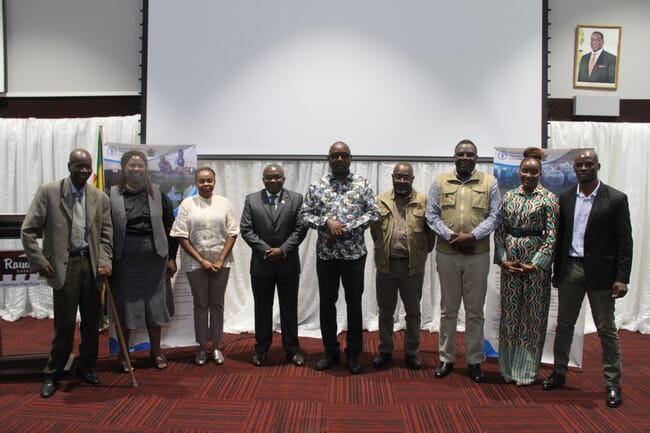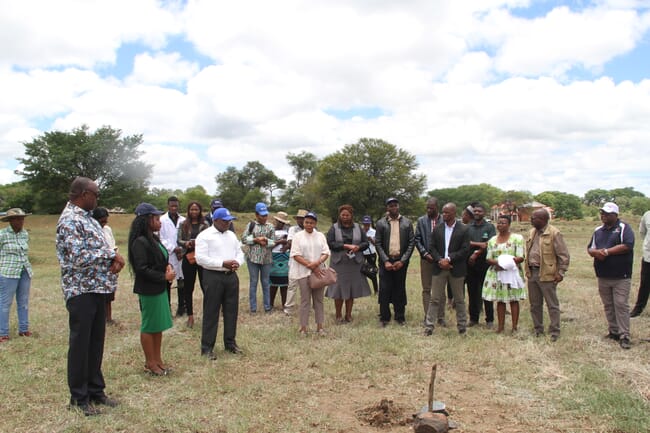
The project aims to increase the production of tilapia fingerlings eightfold © Lawrence Paganga
Working with the local government, the project aims to supply affordable fingerlings to the country’s fish farmers.
The current production from the state’s hatcheries was a mere 100,000 and the quality is mixed due to the lack of scientifically structured breeding programmes.
“This programme is only a demonstration and good co-operation that we have with the Government of Zimbabwe. We are starting with the fishery programme ready to show the importance and potentiality that Zimbabwe has in terms in the fishing sector,” explained FAO Southern Africa sub-regional coordinator and country representative to Zimbabwe, Patrice Talla.
“What we are starting is the beginning of a long journey. We also ask other financial partners to invest into this so that in years to come all the 10 provinces of Zimbabwe will be equipped with such capacity so as produce fish and fingerlings. What we are starting is to also improve food security and nutrition in Zimbabwe,” he adds.
Deputy Minister of Agriculture, Davis Marapira, said: “The technical support project [from FAO] will enhance fish breeding and production in Zimbabwe under the FAO technical cooperation programme (TCP) which will go a long way in developing the fisheries and aquaculture sector in the country.”
Marapira added that the programme will also strategically position hatcheries across Zimbabwe, to reduce the cost of breeding the fingerlings.
"The three breeding sites will be at Henderson Research Centre in Mashonaland Central, Makoholi Research Centre in Masvingo and Matopos Research Centre in Matabeleland South provinces.
Potential to triple production
Marapira said Zimbabwe had the potential to increase production from the current 20,000 tonnes per year to 60,000 tonnes as it has over 10,000 dams and a suitable climate for fish production, but it had been a challenge to produce quality fingerlings.
Talla also emphasised that FAO was working on the construction of fish ponds, refurbishment of existing ponds and sourcing of broodstock.
“We will also look into setting up of biosecurity systems and protocols at the three breeding sites, staff capacity building together with reviewing of the current fisheries legal frameworks and production of hatchery management policy guidelines," he said.

© Lawrence Paganga
The project is also a timely boost for Zimbabwe as, according to FAO’s national fisheries specialist in Zimbabwe, Nobuhle Ndlovu, the growth of fish farming in the country has been slowing down due to various challenges including lack of funding, government support and high costs of feeds.
She said: "The growth of aquaculture in Zimbabwe has been slow. Zimbabwe has about 6,000 fish farmers, but they are facing several challenges. These also include lack of traceability of broodstock.
"There is also limited coordination and harmonisation of systematic policies. The demand for fingerlings is outstripping supply and this has led to farmers procuring genetics from various unsolicited water sources."
According to Ndhlovu the numbers of fish ponds increased by 29 percent between 2022 and 2023 – from 5,634 to 7,247. But, while the actual harvest shows a gradual increase across the years, it is consistently lower than the capacity, due to poor management of ponds, and lack of support for farmers.
"FAO commits to work with the government of Zimbabwe in the refurbishment of fishponds, security fencing and enhancing capacity of government staff in hatchery management," she added.



